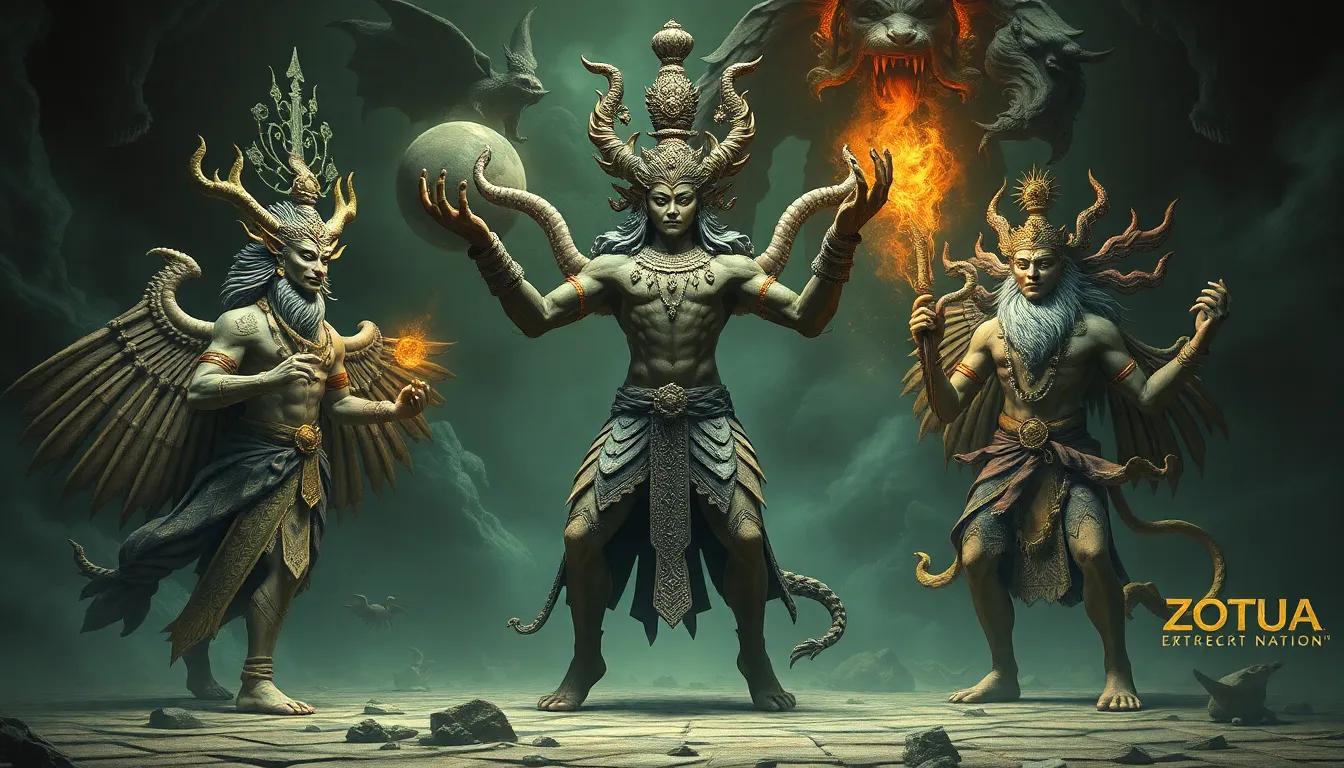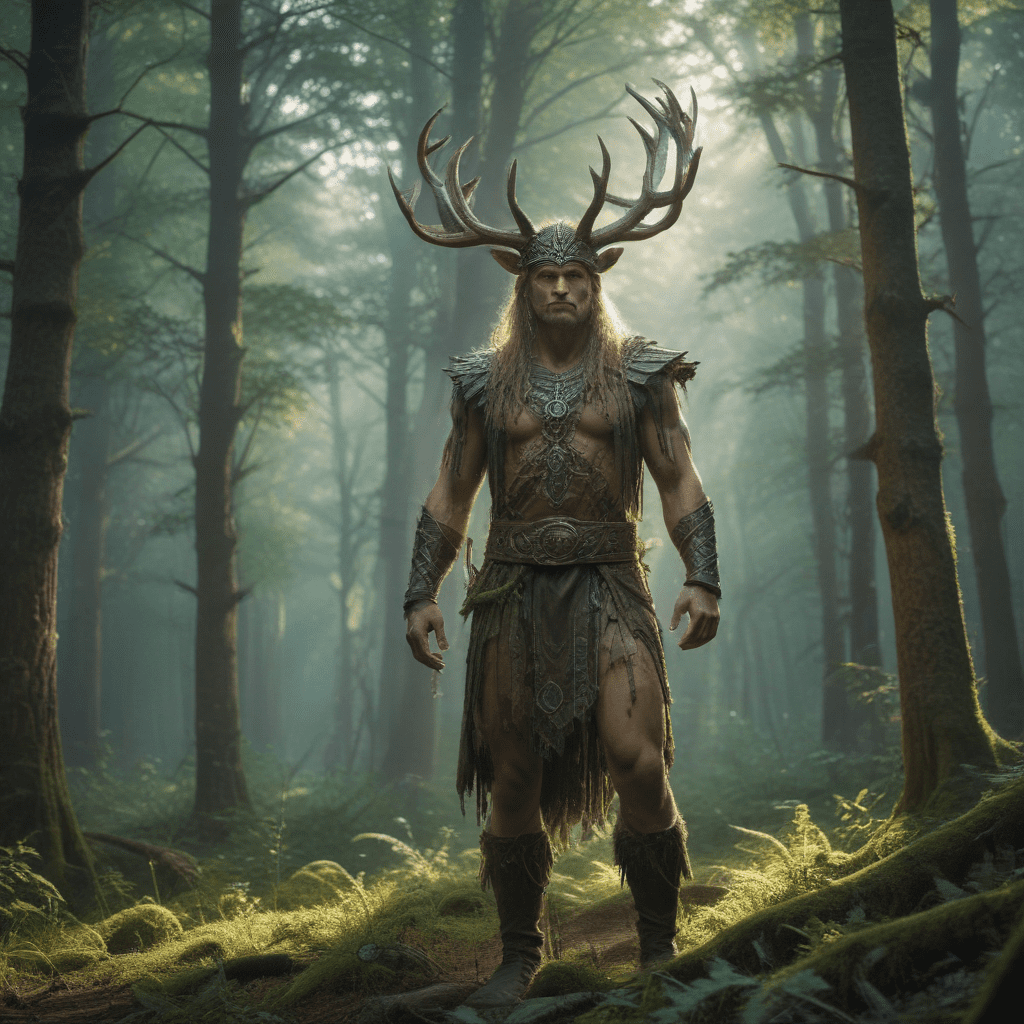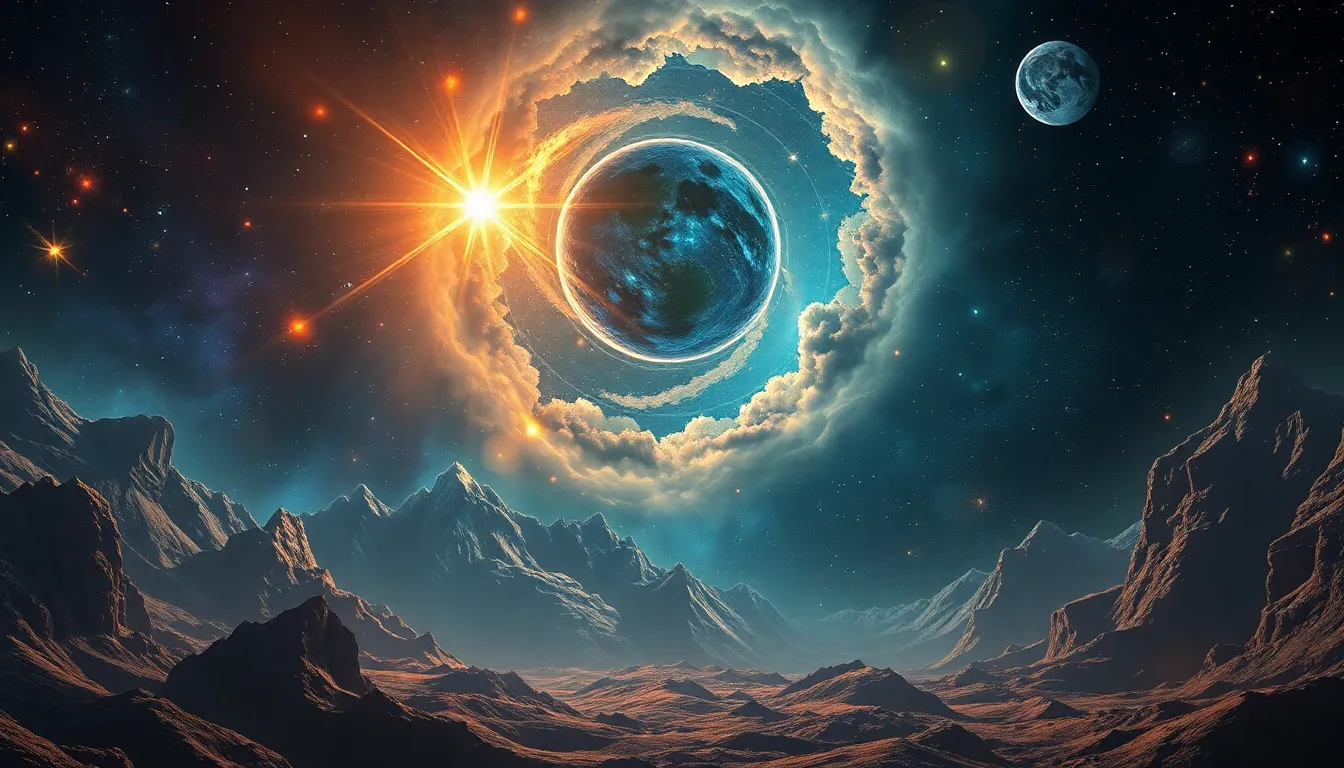The Most Fascinating Myths of Ancient Deities Across Cultures
Introduction to Ancient Deities and Their Myths
Throughout history, cultures have created a rich tapestry of deities to explain the world around them. These ancient deities, often personifications of natural forces or human traits, are central to the myths that have shaped societies. Myths serve not only as entertaining stories but also as vehicles for cultural values, social norms, and moral lessons. This article aims to explore some of the most fascinating myths surrounding ancient deities from diverse cultures, shedding light on their significance and the insights they provide into human civilization.
Creation Myths: How Different Cultures Explain the Universe
Creation myths offer a glimpse into how different cultures understand the origins of the universe and human existence. These narratives often reflect the values and beliefs of the cultures that produced them.
- Mesopotamian Myths: The Enuma Elish is a well-known creation myth from ancient Mesopotamia. It describes the rise of the god Marduk, who defeats the chaos monster Tiamat and uses her body to create the world.
- Egyptian Creation Stories: In Egyptian mythology, the god Atum emerges from the primordial waters of Nun and creates himself, giving birth to the first gods and goddesses who populate the world.
- Hindu Cosmology: Hindu creation narratives, such as the story of Brahma’s dream, depict the universe as a cyclical process of creation and destruction, illustrating the intricate relationship between the cosmos and the divine.
Gods of War: The Embodiment of Conflict and Power
War deities often embody the struggles and conflicts inherent in human society, representing not just physical battles but also the complex nature of power and conflict.
- Ares and Athena: In Greek mythology, Ares represents the chaotic and violent aspects of war, while Athena embodies strategic warfare and wisdom, showcasing the duality of conflict.
- Mars and Bellona: The Roman god Mars, akin to Ares, is worshipped as the protector of the Roman state, while his consort Bellona represents the fury of war.
- Tyr in Norse Mythology: Tyr is the god of war and justice, known for his bravery and sacrifice, particularly in binding the wolf Fenrir, illustrating the intersection of war and morality.
Goddesses of Love and Fertility: Symbolism and Influence
Goddesses associated with love and fertility play crucial roles in their respective mythologies, often influencing human relationships and cultural practices.
- Aphrodite: The Greek goddess of love, beauty, and pleasure, Aphrodite’s myths emphasize the power of attraction and desire, shaping how love is perceived in Greek culture.
- Venus: In Roman culture, Venus is celebrated not only as a goddess of love but also as a symbol of beauty and fertility, inspiring countless works of art and literature.
- Inanna/Ishtar: The Sumerian goddess Inanna, also known as Ishtar, embodies duality—representing both love and war, her stories reflect the complexities of human emotions and relationships.
Underworld Myths: The Afterlife Across Cultures
Myths surrounding the afterlife reveal how different cultures interpret death and what lies beyond.
- Egyptian Beliefs: Osiris, the god of the underworld, represents resurrection and eternal life, with stories detailing the journey of the soul through the afterlife.
- Greek Underworld: Hades, the god of the underworld, governs a realm where souls dwell after death, with myths explaining the journeys of heroes and the significance of proper burial rites.
- Mayan Concept of Xibalba: In Mayan mythology, Xibalba is the underworld, inhabited by gods who test the souls of the deceased, reflecting a complex view of death and the afterlife.
Trickster Deities: Chaos and Cleverness in Mythology
Trickster deities embody chaos, creativity, and the breaking of norms, often challenging the status quo and teaching valuable lessons.
- Loki: In Norse mythology, Loki is a complex figure who embodies mischief and cunning, often causing problems for the gods but also aiding them through his cleverness.
- Anansi: In West African folklore, Anansi the spider is a trickster figure whose stories convey moral lessons about wisdom, resourcefulness, and the nature of storytelling itself.
- Coyote: In Native American traditions, Coyote is known for his trickster qualities, often representing the duality of creation and destruction, and serving as a cultural teacher.
Mother Earth and Nature Deities: The Connection to the Environment
Nature deities often symbolize the relationship between humans and the natural world, reflecting the importance of environmental stewardship in various cultures.
- Gaia: In Greek mythology, Gaia is the personification of Earth, representing fertility and the nurturing aspects of nature.
- Pachamama: In Andean culture, Pachamama is revered as the Earth goddess, symbolizing the connection to agriculture and the cycle of life.
- Indigenous Belief Systems: Many indigenous cultures have nature deities that govern elements like water, wind, and wildlife, emphasizing respect for the environment.
The Influence of Ancient Myths on Modern Culture
The myths of ancient deities continue to resonate in modern culture, influencing literature, art, and popular media.
- Persistence in Literature: Classic themes from ancient myths frequently appear in contemporary literature, inspiring new narratives that echo their timeless messages.
- Artistic Representations: The visual arts are rich with depictions of ancient deities, showcasing their enduring influence on artistic expression.
- Film and Adaptations: Modern film adaptations often draw from ancient myths, reinterpreting these stories for new audiences while maintaining their core themes.
Cross-Cultural Comparisons: Similarities and Differences in Deity Myths
Despite the diversity of cultures, many myths share common themes that reveal universal human concerns.
- Creation Stories: Across cultures, creation myths often feature a central figure or force that brings order from chaos, highlighting a shared quest for understanding origins.
- War and Conflict: The portrayal of war deities reflects the universal nature of conflict in human societies, often embodying the virtues and vices associated with war.
- Nature Deities: Many cultures venerate nature deities, illustrating a common reverence for the environment and the need for harmony with nature.
Conclusion
The myths of ancient deities provide profound insight into the values, beliefs, and experiences of various cultures throughout history. By examining these fascinating narratives, we gain a deeper understanding of how ancient societies viewed the world, themselves, and their place within the cosmos. These myths continue to influence modern culture, reminding us of the shared human experience that transcends time and geography.



